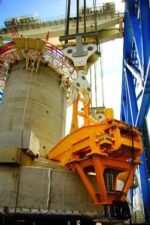Hypertherm releases Rotary Tube Pro tube cutting software
Hypertherm, a U.S. based manufacturer of plasma, laser, and waterjet cutting systems, has released Rotary Tube Pro, software that makes it easier to design and cut tube and pipe parts with no 3D CAD experience required. The software features a parametric design interface that allows main tubes and side-wall cutouts to be added from a list of pre-defined shapes. Alternatively, users can add tubes and cutouts directly from a CAD program. This flexibility means fabricators and manufacturers can enjoy greater productivity by increasing programming speed, and improving cut quality for improved fit-up with fewer secondary operations. The software also includes an optional rotary bevel interface provided with bevel cut charts based on True Bevel™ technology, which greatly reduce bevel setup time. Rotary Tube Pro software includes more embedded cut process expertise in the NC code than other tube and pipe software. By drawing on years of research and development, Hypertherm software developers were able to deliver optimal outcomes based on factory-tested and proven job parameters including leads, separations, kerf, feedrate, and cutting techniques. Also, Hypertherm has applied feedback received during months of testing to the Rotary Tube Pro version. Enhancements include: New 3D geometric modeling engine that delivers a faster, more responsive 3D model when entering dimensions and other properties Ability to import STEP file formats (*.step), for the quick exchange of 3D objects from one platform to another Cut sequence enhancements that allow for the cutting of interior parts first and improved sequencing flexibility Simplified bevel material selection in which only materials and classes that can be beveled are displayed New setups, spreadsheets and machine files that enhance cut quality and accuracy on beveled tubes Rotary Tube Pro supports plasma, laser, waterjet, and oxyfuel cutting processes for virtually all brands of tube cutting machines, including stand-alone units and cutting […]







